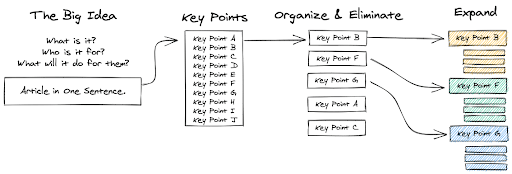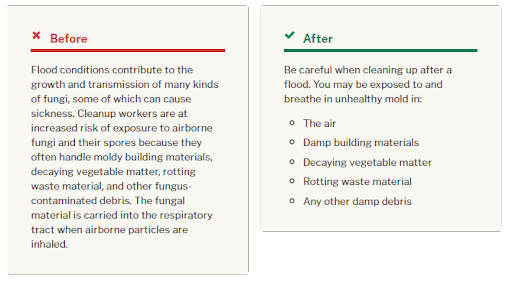Writing Articles & Blog Posts
Introduction to Article Marketing
For Beginners & Pros
The writing jobs opportunity is so big, you might be wondering where to start. So let’s make this simple—writing articles is without question the simplest and best way to get your writing career off the ground.
First of all, this market is huge. Every day, thousands of businesses hire writers like you to create articles for them. All kinds of organizations in many different niches need articles for a whole host of different reasons.
This means you will never run out of work in this niche. Better still, there’s room for everyone in article writing. If you are a total rookie, there are easy articles for you to write. And if you’re a seasoned pro, you have the chance to leverage your expertise and make more money.
So article writing is a no-brainer option. You’ll be doing interesting work, learning as you go, and getting well paid for your efforts. Let’s find out what it’s all about.
What is Article Writing?
First of all, let’s define what an article is. Traditionally, articles were the longer pieces of content published in newspapers and magazines. But since the advent of the Internet, the scope has become much broader.
An article is any piece of content that discusses a topic of interest, providing information and insights. Of course, newspapers and magazines still publish a lot of articles every day. But now, you will also find articles published in blogs and on platforms such as LinkedIn. In short, articles are everywhere…and that means opportunity for you.
Articles may be as short as 500 words (just a few paragraphs) or as long as 5000 (several pages). There are no rules. As the old saying goes, an article should be like a lady’s skirt—long enough to cover the subject but short enough to be interesting.
As an online writer, you’ll find the articles you create will fall into one of two categories:
Blog posts
Other articles
We’ll examine both options and find out what they have to offer.
Blog Posts
Nowadays, almost every business has a blog. Millions of organizations and individuals have them, too. A blog is like an online diary for sharing thoughts and ideas, making it perfect for marketing communications.
Businesses use blogs to attract people to their website, demonstrate their expertise, and generate interest in their products and services. It has been estimated that there are over 600 million blogs in the world, with thousands more being created every day.
Articles on blogs are called blog posts, and the demand for them is insatiable. In fact, around 4000 blog posts are published every minute! Someone has to write all of these blog posts…and it might as well be you.
Other Articles
Although blog posts are important, there are many other ways to get paid for writing articles. There is still massive demand from printed newspapers and magazines, as well as from online news sites.
There are dozens of article directories, each of which has thousands of articles. Plus, you may be asked to write for specialist publishing platforms like Medium.
The nature of article writing varies greatly. For example, you might be asked to write about a new product or review some kind of service. Sometimes the article will be designed to be a fun read, but on other occasions, it will be a detailed look into a particular subject.
One thing’s for sure. The variety is endless, so you will never get bored as an article writer.
How Much Can You Make?
Getting Paid to Write Articles
Writing articles may be fun and interesting…but you’re not planning on writing just for pleasure, right? You want to get paid! Fortunately, article writing is such a big market, there’s room to make the big bucks.
Of course, you shouldn’t expect to make a fortune right out of the gate. But with time and patience, you can certainly get there.
The payment for article writing varies widely. This is because there are many variables to take into account. When deciding how much to charge, you need to think about:
A typical article is likely to be in the 1000-2000 words range. That might seem a lot when you are a newbie, but you’ll soon discover that writing articles of this length is easy.
However, be sure to take into account the amount of research required. If you are familiar with the topic and can write the article without much research, that’s great. But for some projects, you may need to spend more time researching and writing. Be sure to factor this in.
So how much can you earn? The honest answer would be ‘it depends,’ but to give you a clearer idea, here are the income ranges you can expect:
You can do very well once you have some experience under your belt and start picking up the most lucrative jobs. Article writing can be your ticket to a six-figure income.
How to Write Great Articles
Excel at Article Writing
The better you get at article writing, the more you will earn. So it makes sense to acquire the skills you need to succeed. Here’s a simple formula for writing attention-grabbing articles that get read and shared enthusiastically.
1. Select Your Topic
Often you will be given the exact topic you need to write about, but not always. You may be given the freedom to develop ideas within a specific niche. That’s when you can get creative!
You are looking for subjects relevant to the company and of interest to a broader audience. Remember that you are trying to draw people in so they discover the company and what it has to offer.
2. Identify Your Target Audience
Before you start writing, you need to understand precisely who you are writing for. Ask yourself:
It’s also important to know the demographics of your audience. For example, if you are writing for older people in rural areas, you may want to avoid being too technical. But if your audience is millennials living in cities, you be more generous with the techy talk.
Also, consider their behaviors and interests. The more you know about what these people do and buy, the more you speak their language. They will feel that you are talking to them personally, making it easier to win them over.
3. Research Your Topic
Having nailed down your topic and your audience, it’s time to do your research. You must be comfortable with the subject before you can write about it. A little time spent researching now will save you hours when writing the article later.
You can learn an awful lot just by doing some simple Google searches. YouTube is also a great source of information, and it’s free! It’s also a good idea to check out the places where members of your audience hang out, such as forums and Facebook groups.
The more you know, the more authoritative your article will be, so don’t skip this step. Research is the key to excellent article writing. Be sure to collect relevant:
4. Outline Your Article
A big mistake many rookie writers make is starting writing without planning. You will find your article is much easier to read if you structure it beforehand.
You can start with just a few bullet points, covering the key elements. Then expand on these until you have a solid outline to follow.
The four elements to focus on are:
5. Write Your First Draft
If you’ve done a good job of all of the above, you will find that writing your first draft is easier than you expected. You will have a clear outline to follow, informed by the solid research you have done.
Don’t worry too much about mistakes at this stage. The main thing is to get something written, even if it’s less than perfect. Find somewhere quiet to work and eliminate distractions. Then just get to it and start writing. When you’ve finished, put your article aside for a little while—overnight if possible.
6. Edit Your Article
When you look at your article the next day, you will be coming at it with fresh eyes. You will likely see many mistakes to fix and have some great ideas about improving the article. By the time you’ve finished editing the second draft, your article will be almost ready to go.
Hold on, though. Go through it a third time and check for typos, spelling mistakes, and other silly errors. You will be surprised what you pick up. If you can get a friend to check it over, too, so much the better.
When you follow this simple process, you will find that writing articles is enjoyable and profitable.
Article Writing Tips & Tricks
Shortcuts to Success
Many people think that writing an article is similar to writing an essay at school. Not so! As an article writer, you need to entertain and inform your readers. Here are some tips to help you.
Keep it Simple
People have short attention spans in today’s world, plus they often read on small smartphone screens. So keep your content simple and easy to read.
Avoid using long, flowery words—they won't impress anyone. It’s much better to speak plain English and get to the point. You want people to stay engaged right to the end and then share the content with their friends.
Use Grammar Apps
Grammar-checking apps like Grammarly and Hemmingway are handy for picking up errors and making helpful suggestions. Even pro writers use these regularly to keep them at the top of their game.
You can also use an online thesaurus to find fresh words and avoid cliches. And, of course, be sure to use a spell checker to help you stay on point.
Use a Headline Analyzer
As the title is the most important part of your article, spending some extra time on this makes sense. One great way to do this is to use a free headline analyzer.
There are several free headline analyzer tools available, and they all work similarly. They will check your headline for strengths and weaknesses, then give you feedback. You can use this feedback to make improvements and maximize the impact you achieve.
Make Good Use of Images
A big, long block of text looks daunting and is likely to put people off. A simple way to keep them interested is to use pictures creatively. You can try adding:
Variety is the spice of life, so mix things up to keep the reader engaged to the end.
Use Bullet Points
Here’s an excellent tip for making your articles easier to read…use bullet points! These are fantastic for breaking up text into easily digestible chunks. Look at the example below to see what a difference this can make.
The ‘After’ version is much easier to read and understand. So make judicious use of bullet points when you have lists of information. Both plain and numbered bullets are acceptable, depending on the context. However, avoid using multiple levels of bullet points, as they soon become very confusing.
Follow these simple tips, and you will be well on your way to writing great articles that sell.
Training Modules
Copyright 2024 - Paid Online Writing Jobs - All Rights Reserved
Copyright 2023 - Paid Online Writing Jobs - All Rights Reserved

















 ?
?

 !
!